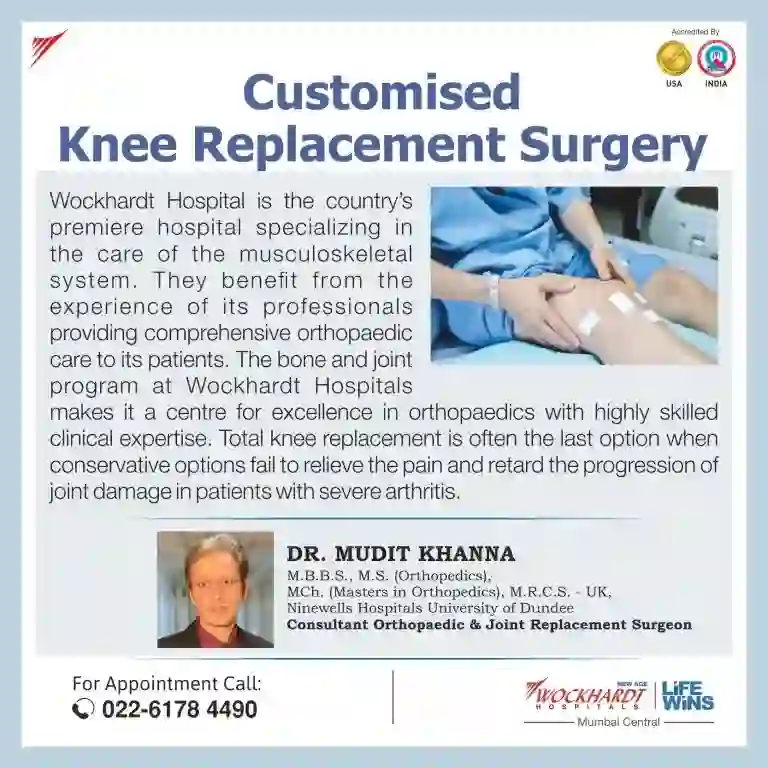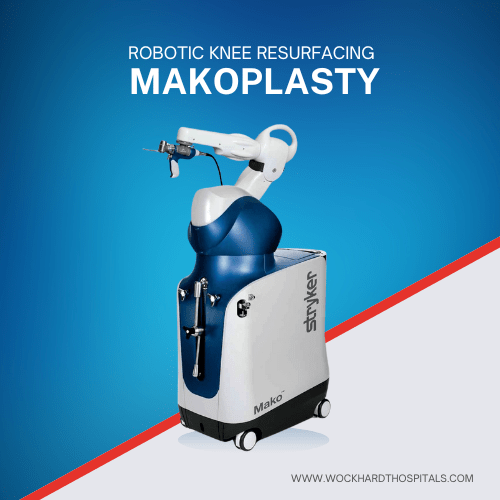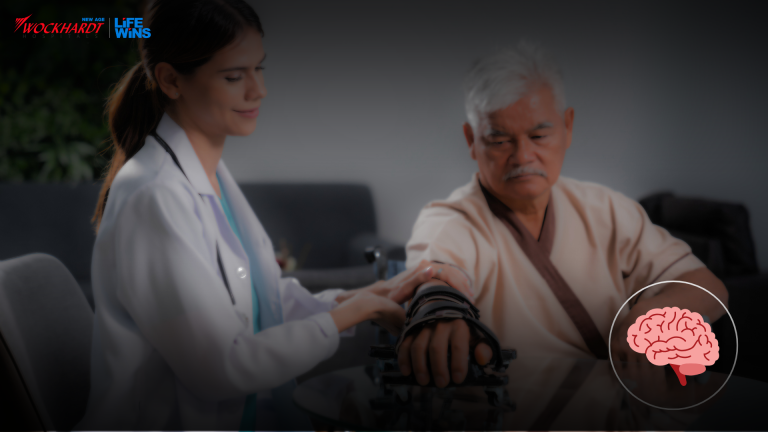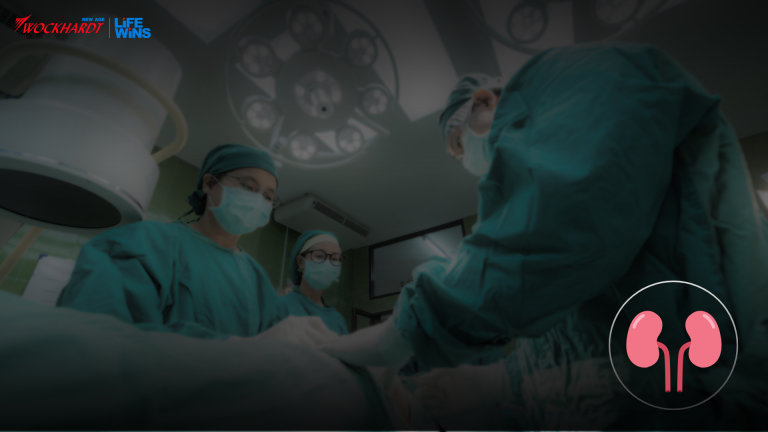Complex brain surgery done on 4-month-old

Nagpur: A complicated brain surgery was performed on a four-month-old in Wockhardt Hospitals in the city recently. The baby boy, Avanish, hailing from Umaria, Madhya Pradesh, had a brain tumor that needed to be removed. The child also had fluid build-up in his brain, leading to a bulging in fontanelle (soft part in children’s skull). It was necessary to extract that as well. Neurosurgeon Dr. Akshay Patil performed this surgery. “The child came to us in a complicated state, having a tumor in his brain which was very difficult to operate upon, but at the same time necessary to remove”, said Dr. Patil. The post-operative care was provided to the baby by pediatrician Dr. Sandeep Yadav. Another challenge for the medical team was to get a magnetic resonance imaging (MRI) scan done before the surgery, which is quite challenging to perform on kids — especially on a four-month-old. The MRI was attempted four times but the child woke up each time. Thus, it had to be performed under sedation. Two simultaneous surgeries had to be performed — once for the hydrocephalus (build-up of fluid in brain cavities) and the other one for the tumor. Both the surgeries needed five-six hours each, and it was risky to keep the kid under sedation for such a long duration. Thus, it was decided that the surgery would be done in two phases. After performing the Covid-19 test and other necessary diagnoses, the infant was taken for surgeries. Both the surgeries were successful. “We feel happy for our contribution in saving a life. The family was provided the benefit of the Madhya Pradesh state government fund, as the treatment for these surgeries was quite expensive. The case was very complex and most of the hospitals in the region had refused to treat the child due to lack of proper facilities”, said K Sujatha, center head, Wockhardt Hospitals. TRICKY TUMOUREpendymomas uncommon in the paediatric population, extremely rare in very young children.4-month-old was having normal development milestones.Admitted without knowledge of another medical history.Tumour detected in the hypothalamus.Also had fluid build-up in the brain, leading to bulging in the skull’s soft part.Two surgeries performed — one to remove fluid and another for tumour.The baby recovered, now needs further paediatric care and radiotherapy. Source: https://timesofindia.indiatimes.com/city/nagpur/complex-brain-surgery-done-on-4-month-old/articleshow/80319334.cms
Uterine Fibroids – Symptoms, Diagnosis & Treatment

Today, due to changing lifestyles and stressful environment, more and more women are facing the problem of uterine fibroids. Fibroids are tumors formed by the irregular growth of uterine cells, that are commonly seen in fertile women and are also usually caused by genetic factors. The exact cause of fibroids is not yet known, but the most probable cause for the development of fibroids is excess estrogen due to hormonal imbalance. Fibroids comes in a variety of sizes and in very few patients it can turn into a cancerous form. A prolonged and untreated fibroid may convert into the cancerous state in around 1% of patients. It is estimated that one among every eight women in India suffers from fibroids. Symptoms of Uterine Fibroids Let us now look at the symptoms of fibroids, if the size of the fibroid is too small or if the fibroid is outside of the uterus, no symptoms appear. Other women may feel uncomfortable and experience painful symptoms such as; excessive bleeding or severe pain during menstruation, Irregular bleeding during two menstrual periods, severe pain during sexual intercourse, pain in the lower back, frequent urination, frequent miscarriages, constipation, anemia, or menstruation stretched over a week. If any of these symptoms appear, a Gynecologist should be consulted immediately. Diagnose of Uterine Fibroids To diagnose fibroids, the doctor may suggest some blood tests along with Sonography (USG). If the exact position of the fibroids is not known in sonography, MRI, or Hysteroscopy is recommended to examine the uterus through a scope. After a thorough examination, patients are prescribed medication or surgery. Some types of fibroids are relieved by medication, if not, surgery is an option. Uterine fibroids can be removed by myomectomy surgery, if the size of the fibroids is small, this surgery can also be done through a laparoscope. Treatment of Uterine Fibroids When there is a risk of recurrent fibroids in the uterus and doctor feels patients may not get benefit from myomectomy surgery, hysterectomy surgery is the only option in which the uterus is removed, resulting in zero risks of recurrent fibroids, but patient selection is very important for the type of surgery to be done for best results. Regular check-ups by a Gynecologist are recommended to prevent fibroids, give a clear idea of family history of fibroids to your doctor, along with these weights should be kept in control, healthy diet and regular exercise has to be maintained, make positive lifestyle changes, avoid stressful situations and avoid medication without doctor’s advice. Dr. Shraddha SabnisDGO, DNB (OBGY), FMASConsultant – Obstetrics & GynecologyWockhardt Hospitals, NashikFor Appointment, Call : 0253-6624444
Cold wave conditions persist: Expert tips to take care of health this winter

A minimum of eight hours of sleep can help you manage your stress and even burn those calories. Schedule check-ups and follow-ups, said Dr. Jinendra Jain, Consultant Physician, Wockhardt Hospitals, Mira Road. Delhi NCR witnessed the coldest night in 15 years recently and the cold wave conditions continue to persist. Amid the pandemic, it is all the more necessary to take adequate precautions to keep health issues at bay. National Disaster Management Authority (NDMA) issued these guidelines that one should keep in mind to tackle the cold wave conditions. Dr Jinendra Jain, Consultant Physician, Wockhardt Hospitals in Mira Road, suggested these tips to beat the winter blues and stay fit and fine. Yes, winter is all about cozying up at home but you shouldn’t miss the sunshine vitamin. You must just go out in the morning and try to soak up in the sun for at least 20 minutes. This will help you to keep your bones and muscles healthy. Moreover, that daily dose of vitamin D will allow you to perk-up your mood, and stay active during those chilly days. Dress appropriately This is one of the most vital things that you must keep in mind. Wear adequate woolen clothes when you venture out of the house. See to it that you wear full-sleeved clothes. Stay physically fit You will have to exercise for at least 150 minutes every week. One can opt for yoga and aerobics at home. You can also dance by playing music. Exercising regularly can boost your immune system as you will also be able to keep allergies and infections at bay and control blood pressure. Manage those skin woes Winter can be harsh on your skin. Your skin can become dry and itchy during those chilly days. To top it all, the problem of chapped lips is common. “Remember to keep yourself hydrated and moisturize your skin from time to time,” said Dr. Jain. Follow a well-balanced diet You will have to eat foods jam-packed with vitamin C as it will allow you to boost immunity. Try to include oranges in the diet. See to it that you eat fresh fruits and vegetables with all the essential nutrients. Opt for walnuts, foods with omega-3 fatty acids, and even green leafy vegetables. Foods with omega-3 also contain antioxidants and even help enhance immunity. Ditch those pizzas, pasta, and even pastries. Sleep well In order to build strong immunity, one will have to get a good night’s sleep. A minimum of eight hours of sleep can help you manage your stress and even burn those calories. Schedule check-ups and follow-ups Health issues like asthma, cold, flu, painful joints, cough, and even sore throat are persistent during winter. Thus, you will have to stay in touch with your doctor and be aware of your health condition. Do not ignore your health at all. Source: https://indianexpress.com/article/lifestyle/health/cold-wave-conditions-ndma-expert-tips-winter-immunity-health-7129819/
5 things you should NEVER feel guilty about whatever be the case

You don’t realize but guilt grows on you, and shatters your confidence. You must have heard and felt ‘guilt’ several times in your life. Sometimes, you end up dwelling on this emotion, and then there are times when people invoke this feeling within you. In both cases, it’s you who suffers the most. To be honest, you don’t need this emotion in your life, especially for things that make you happy. If you think that guilt is just another emotion that will come and go, then we must tell you that in some cases, it’s here to stay! It lays a trap in such a way that a person’s mental health goes for a toss. That’s why understanding guilt properly is very important. To dive deep into this emotion, we spoke to Dr Sonal Anand, psychiatrist, Wockhardt Hospitals, Mumbai and this is what she had to say. Sense of guilt is filled with negativity, says Dr Anand Guilt is a by-product of over thinking. At times you tend to over analyze a situation way too much that you feel burdened after doing it. This is even if it made you happy! “The cognitive theory proposes that guilt stems from thoughts. Thoughts that you have or are going to cause harm to someone, or self lead to the emotion of guilt, though it may not be entirely true,” explains Dr Anand. She adds, “Guilt may prevent us from doing an unacceptable act, and makes us realize that we have to correct our actions. But too much guilt or a condition called ‘pathological guilt’ can have a negative impact on our emotional health. It can totally break the person’s self-confidence, and give rise to thoughts of self-doubt.” Inappropriate guilt often leads to depression, anxiety disorders, and sometimes thoughts of physical harm. Sometimes, we may not be able to judge the circumstances correctly, and guilt can alter our actions, and give rise to defense mechanisms to further avoid guilt. Wallowing in that guilt can lead to a lot of negativity. There could be mistakes you are guilty of having committed. But do you know where the problem lies? It pops up when you start doubting yourself in everything you do. Dr. Anand says that these are a few things one should do guilt-free because that’s what helps them grow. 1. Never feel guilty for saying NO You should never be guilty for being assertive, and saying no. If you feel that you are being taken for granted or if someone is taking undue advantage, you should never feel guilty about saying no. Many mothers feel guilty about saying no to the child. The circumstances should be studied properly, and only goodwill should be used even if it means saying “ no”. 2. Never be guilty for making life choices Choosing your way of living is your birthright, and you should never feel guilty about it. You are the best judge of your own life. No one else can judge your life choices, be it your career goals or choosing a life partner, or even deciding to stay single. 3. Pampering yourself should be first on your list “One should never feel guilty about spending time or money on yourself. You need to keep reinventing yourself and you need a break as well for better outcomes. So, it’s ok to spend it on yourself. Of course, you have to decide according to your budget, but there should be no feeling of guilt involved,” says Dr. Anand. 4. Don’t feel guilty if you are unaware about something If you don’t know anything, that doesn’t mean you know anything. You aren’t Google, right? Therefore, you should never feel guilty about not knowing how to answer a question. Nobody has all the answers, so not knowing an answer is not a serious flaw. It’s ok to say “ I don’t know “ honestly, rather than manipulate the answer. 5. Never feel guilty about letting go “Whether it’s grieving a life partner or getting a divorce, or choosing to end a dysfunctional relationship… it’s ok to let go and move on. There will always be memories and emotions involved, but guilt should not be one of them,” Dr. Anand concludes. So ladies, next time you go on that guilt trip, just check you are not doing it for the above reasons. Source: https://www.healthshots.com/mind/emotional-health/5-things-you-should-never-feel-guilty-about-whatever-be-the-case/
What Causes Hernia? its Types, Diagnosis & Advanced Treatment

You may have heard of Hernias many times, but even today, not everyone is fully aware of them. Simply put, a hernia is when an organ or part of an organ comes out of a natural or unnatural hole in the body. The weakening of the abdominal muscles causes the intestines to be pulled into the cavity, causing the abdomen to swell and a small-to-large bulge appears which causes abdominal pain. Types of Hernia The most common type of hernia in men is with the lining of the abdomen above the intestinal tract. Hernia blisters form in the thighs in old age, if the abdominal muscles are weak. This is called an inguinal hernia. Inguinal hernia occurring on the thigh is more common in teenagers, this bulge appears on the upper part of the thigh. Also in infants, muscles of the placenta are weak, their navel appears to be swollen when they cry, so it is better to get it checked by a doctor. In the same way, in pregnant women, uterine tension falls on the abdominal muscles. Excess fat builds up in the abdomen, causing a cavity in the abdomen and results in the intestines to be pulled into it. What are the Main Causes of Hernia? A hernia can occur if the abdominal muscles are weak and when there is too much pressure on the abdomen from the inside. For example, whooping cough in infants, asthma in older people, cough caused by smoking, constipation, urinary incontinence, or lifting very heavy objects can lead to a hernia. It is important to consult a surgeon as soon as you notice a hernia. Failure to do so can lead to serious consequences, such as severe abdominal pain, gas, and even retention of the bowel. Sonography (USG) is performed to determine the nature and location of the hernia, and then the course of treatment is determined. How is a Hernia Diagnosed? To steer clear of Hernia, surgery is the only solution. This surgery can be performed in the traditional way and is also done with the most advanced laparoscopy method. During surgery, the cavity is closed inside the abdomen and a mesh called prolin mesh is inserted so that the organ does peep out of that space. There are many benefits of having surgery with laparoscopy. It does not have a large incision, surgery is done through an advanced laparoscope through only three small holes. This result is no bleeding, very short hospital stay, the patient recovers quickly and can start his/her routine early. It’s important to see a specialist immediately after noticing hernia-like symptoms and follow the instructions given by the doctor. This will help you to deal with the problem of a hernia successfully. Dr. Sandeep SabnisMS, DNB (Surgical Gastroenterology)Consultant – MIS, Surgical Oncology, Bariatric Surgery, HPB & Liver TransplantationWockhardt Hospitals, NashikFor Appointment, Call: 0253-6624444
Are your parents bored and lonely at home? Engage them with these 6 activities

It is important to keep your parents mentally and physically charged for the sake of their well-being. Read on to know more. Staying engaged is not just important for the younger lot, but even older adults. It not just keeps them physically fit, but also keeps a tab on their mental and emotional quotient. . In cases where parents live away from their children, it becomes all the more important for them to engage in productive activities that can help them pass their time. This will definitely help them divert their attention from things that keep them worried all the time. Experts have also analyzed that those elderly adults who are active and enjoy their retirement time are healthier, and have better mental health than those who have nothing to do. According to Dr Rahul Khemani, consultant psychiatrist at Wockhardt Hospitals, Mumbai, when older adults are engaged and active, they tend to be happier. They tend to experience more satisfaction and contentment in their lives. As senior members of our society suffer from isolation and feelings of loneliness, a lack of support system can lead to increased anxiety and depression. It can even exacerbate dementia in some older people. That’s why it is important to consider physical and mental activities for these older adults. It is also beneficial to incorporate these into their daily routines, especially in the long run. Dr Khemani recommends these six activities to keep older people engaged: 1. Outdoor walks Outdoor walks are not just great for your parents’ physical health, but it also gives them an opportunity to interact with fellow mates. During covid time, it’s better to stay at home, but to break the monotony, they can totally wear proper masks, maintain social distancing, and enjoy a walk once in a blue moon. “Do you know, being in nature can become a natural soothing agent?” says Dr Khemani. 2. Senior exercise programs “Many parks have come up with community-based exercise programs. This increases the sense of bonding between older adults, provides companionship, and also fosters physical activity,” he recommends. 3. Arranging coffee dates Being old doesn’t mean you can’t do all the stuff that you used to when you were young. It is a great mental booster to spend quality time with your partner or friends. Going often on coffee or lunch dates can totally help in breaking the monotony. “Loneliness is one of the biggest challenges faced by our grandparents. Seeking out the company of friends on a regular basis can alleviate the feeling of being alone. It also provides a sense of comfort, especially for those who have lost their spouse,” he says. 4. Learning new technology With everything going online, they can also try and learn things like how to make a video call, use Facebook, or watch a movie on Netflix. It can be a great way to boost their confidence and bring some change to their otherwise routine lives. This will also make them feel accomplished, and gives them a sense of confidence,” suggests Dr. Khemani. 5. Pick a volunteer job If your parents are hale and hearty and want to spend some time working then, there is no harm trying to help them with a volunteer job. Of course, their job doesn’t have to be hectic like before, but this will just help them pass their time. Joining an NGO or an organization that helps others is a great way to satisfy yourself, and feel good. 6. Take up hobbies “Retirement is a good opportunity to take up hobbies that you might have given up a long time back. Being engaged in a hobby is perfect to be creative, productive, and happy,” he concludes. So, give your parents the gift of life and make them realize that this is their time to have fun, and do what they always wanted to. Trust us, over a period of time, you will see them much happier and healthier!
Customized Knee Replacement Surgery

Wockhardt Hospital is the country’s premier hospital, specializing in the care of the musculoskeletal system. They benefit from the experience of their professionals, who provide comprehensive orthopedic treatment and care to their patients. The bone and joint program at Wockhardt Hospitals makes it a center for excellence in orthopedics with highly skilled clinical expertise. Total knee replacement is often the last option when conservative options fail to relieve the pain and retard the progression of joint damage in patients with severe arthritis. Conventional Knee replacement surgery involves replacing the damaged cartilage and bone from the surface of the knee joint with a synthetic implant. Nowadays the new technique called Customised Knee Replacement Surgery has brought in more patient satisfaction and better results for patients. How is the Procedure Different? A custom knee replacement is the novel technology in total knee replacement that uses an MRI scan of the knee to model your knee and then make custom designed cutting guides. T e procedure begins before knee replacement surgery with an MRI scan and X-rays to make exact measurements of your knee. Computer software transforms that MRI image into a 3-D model of your arthritic knee and then virtually rectifies any deformity so as to restore the knee to its pre-arthritic condition. Specially designed cutting guides are then made, which allows the surgeon to preserve more of the bone and ligaments to accept the knee replacement implant during the surgery, providing better accuracy and fit of the implant. What are the Benefits of a Custom Knee Replacement? Who is Eligible for Procedure? You are not a candidate for custom knee replacement if you have had previous corrective knee surgery or injured ligaments. Patients with knee implants, pacemakers, or vascular clips who are not eligible for an MRI scan are not eligible for a custom knee replacement. To know and understand the procedure and benefits please contact our centers at Wockhardt Hospital. The department of Bone and Joint at Wockhardt Hospital provides a continuum of treatment and care with an integrated system of orthopedic surgeons, supported by cutting edge technology and world-class infrastructure. Our goal is to treat patients right from everyday aches and strains, sports injuries, trauma management to major joint replacement injuries. Our department provides a comprehensive state of the art approach to the prevention, assessment, and treatment, and rehabilitation of musculoskeletal conditions. Wockhardt Hospitals is regarded as a center of excellence in the healthcare domain, having facilities in North Mumbai (Mira road), South Mumbai (Mumbai Central), Navi Mumbai (Vashi), Nagpur, Nasik, and Rajkot. Our prime objective is patient safety and quality of care at all levels. The guiding philosophy is to serve and enrich the Quality of Life of patients and to make life win.
What is borderline diabetes? Know the warning signs, steps you can take to reduce your risk
A doctor tells us what borderline diabetes, or prediabetes, means, how to recognize warning signs, risk factors, and what you can do to prevent or reduce your risk of type 2 diabetes. Borderline diabetes or prediabetes is a silent condition that can be triggered by a range of other health conditions, including high blood pressure, high cholesterol, obesity, especially abdominal fat. While the exact cause of prediabetes is unknown, lifestyle factors are the primary causes of this condition, hence, making changes in some aspects can significantly reduce your risk of borderline diabetes that may affect many people. Prediabetes can damage your kidneys among other health complications like heart disease, stroke, vision problems, etc. Understanding the risk factors for this silent, yet, serious condition and getting a regular wellness checkup is crucial for early detection and a better outcome. In this article, Dr. Pritam Moon, consultant physician, Wockhardt Hospitals, Mira Road, Mumbai, tells us what borderline diabetes means, how to recognize warning signs, risk factors and what you can do to prevent type 2 diabetes from developing. What exactly is borderline diabetes? Borderline diabetes, or prediabetes, is the condition that occurs before a person has type 2 diabetes. It can also be termed as glucose intolerance as your blood sugar levels are not within the normal range – not that high to declare you as a diabetes patient. Many people may have uncontrolled blood sugar levels but not high enough to be diagnosed with diabetes. The insulin that is produced by the pancreas is less effective in removing sugar from the blood and one may develop insulin resistance. Your blood glucose level will rise immediately after you eat. Having prediabetes is worrisome as it indicates that you may develop diabetes in the near future. Risk factors for borderline diabetes Being overweight, having high blood pressure or cholesterol levels, being obese or overweight, and leading a sedentary lifestyle can be the culprits behind this condition. Similarly, a family history of diabetes can also elevate your chances of undergoing diabetes surgery. You will also be shocked to know that people with pre-diabetes can have kidney problems. Yes, it can take a toll on your kidneys and put you at risk of chronic kidney disease (CKD) and may also require a transplant. Likewise, nerve damage, blood vessel, and even heart disease can be seen in the patients. Signs and symptoms of borderline diabetes Borderline diabetes does not usually have clear signs or symptoms, hence, some people may not be aware that they have it. You must look for symptoms such as: You should consult an expert and start immediate treatment to tackle borderline sugar levels. Take it as a wake-up call and start managing the condition on an immediate basis. Treatment for borderline diabetes Upon diagnosis, your doctor will prescribe certain medications to regulate your blood sugar levels. You will have to take these medications at the time suggested by the physician. Along with that, lifestyle modification is the need of the hour. Opt for these lifestyle changes to manage borderline diabetes or reduce your risk It is imperative to get yourself educated about borderline diabetes and act accordingly. Do not neglect this condition as it can worsen your health. Source: https://www.timesnownews.com/health/article/what-is-borderline-diabetes-know-the-warning-signs-steps-you-can-take-to-reduce-your-risk/681517
70% of Spine Surgeries Can Be Done Through Minimally Invasive Technique

Patients can walk within 24 hours of surgery with lesser chances of infection along with superior and safer clinical outcomes compared to traditional surgery. Technological advances have allowed more back and neck conditions to be treated with a minimally invasive surgical technique. Because minimally invasive spine surgery (MISS), does not involve a long incision, it avoids significant damage to the muscles surrounding the spine. Spine surgery is traditionally done as “open surgery” with a recovery period of 2-3 weeks. This means that the area being operated on is opened with a long incision to allow the surgeon to view and access the anatomy. MISS results in less pain after surgery and a faster recovery. Special instruments and viewing systems allow surgeons to work through small incisions, often shorter than an inch. These include tubular retractors, image-guidance systems, and endoscopes. According to Renowned Neurosurgeon of the city, Dr. Mazda Turel “In my experience 70-80% of all spine surgeries can be done through the more advanced minimally invasive technique which leads to superior clinical and aesthetic outcome along with lower risk of infection and patients can often go home the same day or the next day of the surgery” 64-year-old Mrs. Supriya Patil was operated on 4 times in the 1900s and 2000’s for unremitting back and leg pain with very little improvement with each procedure. She had a 12-inch incision running down her lumbar spine from those surgeries and was so averse to having another operation that she preferred to be bed-bound over the past one year and was in immense pain. Her imaging was suggestive of instability with residual compression. With great difficulty, her family and her neurosurgeon convinced her to get a Minimally Invasive surgery done. By making 2 small incisions each on either side of her spine, using minimally invasive techniques, her Neurosurgeon was able to fix 3 unstable levels, release the pinching of the nerves and restore her spinal curvature. She was able to walk the same day of surgery and was discharged a few days later with significant pain relief and is off all pain medication. According to Dr. Mazda Turel the Success of Minimally Invasive Spine Surgery Depends on:
Benefits of Keyhole Brain Surgery

A revolution in malignant and benign tumors treatment “The first goal of a neurosurgeon is to restore or maintain my patients’ quality of life. Efforts are at the global forefront of advancing these minimally invasive approaches for a wide range of common and uncommon brain and skull base tumors, various vascular conditions such as aneurysms and craniofacial pain syndromes. Keyhole surgery is the concept of safely removing brain & skull base tumors through smaller, more precise openings that minimize collateral damage to the surrounding scalp, brain, blood vessels & nerves. Fortunately, given advances over the last two decades in technology and instrumentation as well improved brain and skull base anatomical understanding, a majority of brain and skull base tumors can now be removed through this surgical approach (Keyhole). Notably, this approach technically demanding, require specialized instrumentation, significant surgical expertise, and are not appropriate for all tumors. Consequently, there remains a role for conventional larger craniotomies. Approaches to perform Keyhole surgeries: Advantages:















